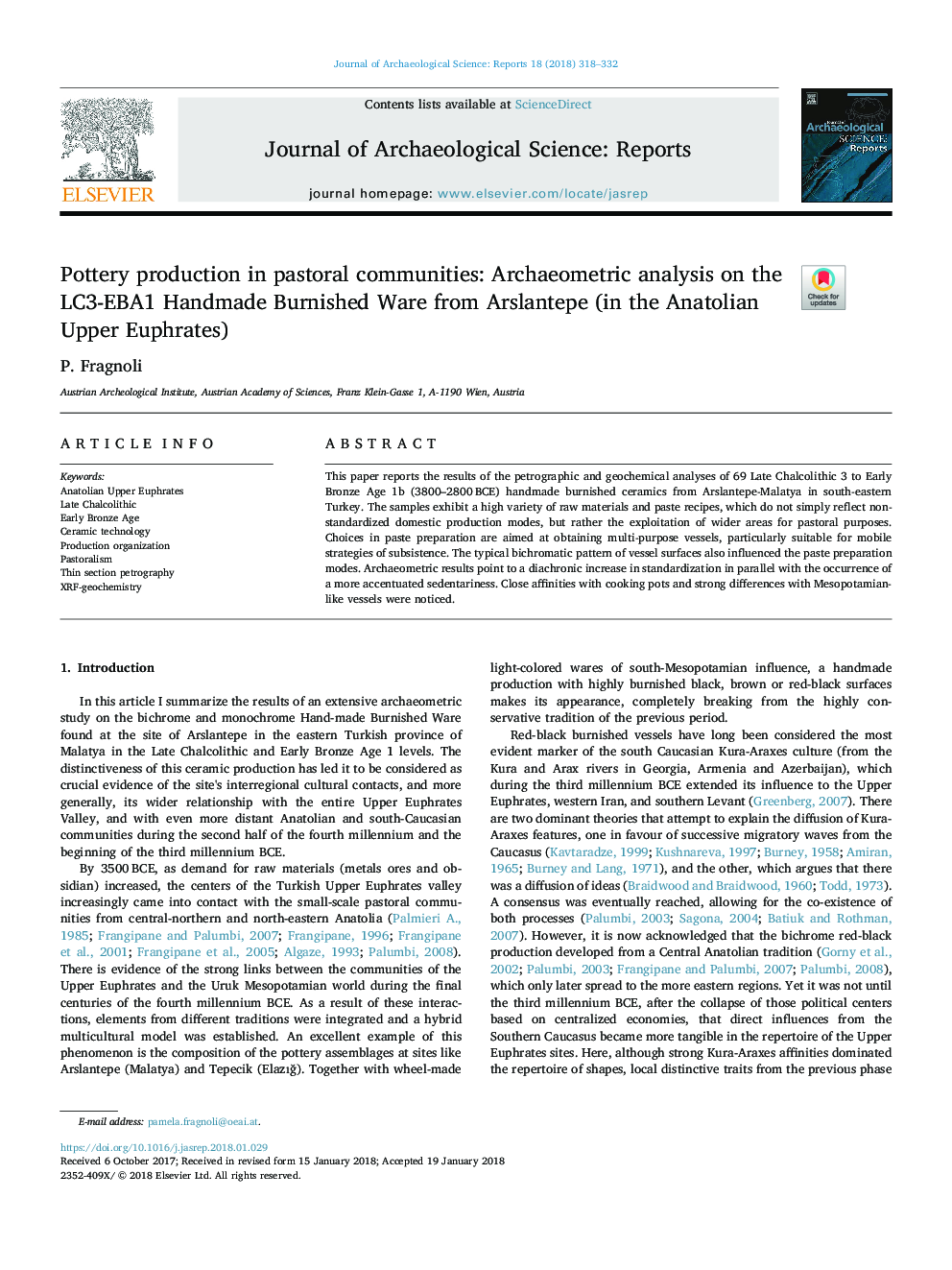| Article ID | Journal | Published Year | Pages | File Type |
|---|---|---|---|---|
| 7444909 | Journal of Archaeological Science: Reports | 2018 | 15 Pages |
Abstract
This paper reports the results of the petrographic and geochemical analyses of 69 Late Chalcolithic 3 to Early Bronze Age 1b (3800-2800â¯BCE) handmade burnished ceramics from Arslantepe-Malatya in south-eastern Turkey. The samples exhibit a high variety of raw materials and paste recipes, which do not simply reflect non-standardized domestic production modes, but rather the exploitation of wider areas for pastoral purposes. Choices in paste preparation are aimed at obtaining multi-purpose vessels, particularly suitable for mobile strategies of subsistence. The typical bichromatic pattern of vessel surfaces also influenced the paste preparation modes. Archaeometric results point to a diachronic increase in standardization in parallel with the occurrence of a more accentuated sedentariness. Close affinities with cooking pots and strong differences with Mesopotamian-like vessels were noticed.
Keywords
Related Topics
Social Sciences and Humanities
Arts and Humanities
History
Authors
P. Fragnoli,
